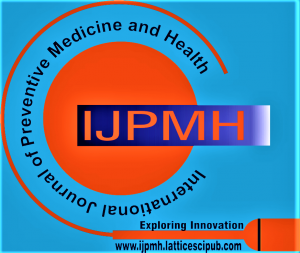![]()
Analysing the Impact and Efficacy of Telemedicine through Data Analysis
Manoj Kumar1, Krishna Mohan Pandey2
1Manoj Kumar, Assistant Professor, Department of CSE, Quantum University, Roorkee, Uttarakhand, India.
2Krishna Mohan Pandey, Assistant Professor, Department of CSE, Quantum University, Roorkee, Uttarakhand, India.
Manuscript received on 21 August 2024 | Revised Manuscript received on 02 November 2024 | Manuscript Accepted on 15 November 2024 | Manuscript published on 30 November 2024 | PP: 10-15 | Volume-5 Issue-1, November 2024 | Retrieval Number: 100.1/ijpmh.F104604060924 | DOI: 10.54105/ijpmh.F1046.0501124
Open Access | Ethics and Policies | Cite | Zenodo | OJS | Indexing and Abstracting
© The Authors. Published by Lattice Science Publication (LSP). This is an open access article under the CC-BY-NC-ND license (http://creativecommons.org/licenses/by-nc-nd/4.0/)
Abstract: Telemedicine has become a crucial aspect of modern healthcare, utilizing digital communication technologies to offer remote medical services. This research examines the implementation, impact, and challenges of telemedicine, with a focus on data analysis to evaluate its effectiveness and future potential [1]. Through a comprehensive analysis of patient data, service utilisation, and outcomes, this study aims to highlight the strengths and areas for improvement of telemedicine. The significance of telemedicine grew notably during the COVID-19 pandemic, underscoring the need to evaluate its impact on healthcare. This paper assesses telemedicine by analysing patient outcomes, service utilization, and patient satisfaction, identifying key areas for policy and practice enhancement. Findings indicate substantial improvements in accessibility and patient satisfaction, though technological and equitable access barriers persist. The rapid evolution of telemedicine is reshaping healthcare delivery. Through data analysis, this study explores the role and potential of telemedicine in modern healthcare. Leveraging a diverse dataset, statistical and machine learning techniques are applied to uncover significant patterns and insights. Results show marked improvements in access, patient satisfaction, and cost savings for both patients and providers, while challenges such as technology adoption and digital literacy gaps remain critical. The adoption of telemedicine has accelerated significantly, transforming healthcare delivery and accessibility [2]. This study examines the impact and efficacy of telemedicine by utilising data analysis to assess its effects on patient health, access to care, cost efficiency, and patient satisfaction. Data were collected from various sources, including patient records, survey responses, and healthcare cost reports, encompassing a diverse patient population across different demographics and regions. Key metrics, including treatment adherence, recovery rates, consultation frequency, and cost reduction, were analysed. The findings reveal that telemedicine generally improves access to healthcare, particularly for rural and underserved populations, and can reduce healthcare costs by minimizing the need for in-person visits. However, challenges such as limited access to technology, variability in patient outcomes, and disparities in healthcare quality were identified. This analysis offers insights into the strengths and limitations of telemedicine, providing strategies for enhancing its efficacy and promoting equitable access. The study underscores the need for ongoing research to optimize telemedicine’s role in modern healthcare systems [3].
Keywords: Telemedicine, Telehealth, E-health, Digital Health, Remote Healthcare, Patient Outcomes.
Scope of the Article: Health Care Management
